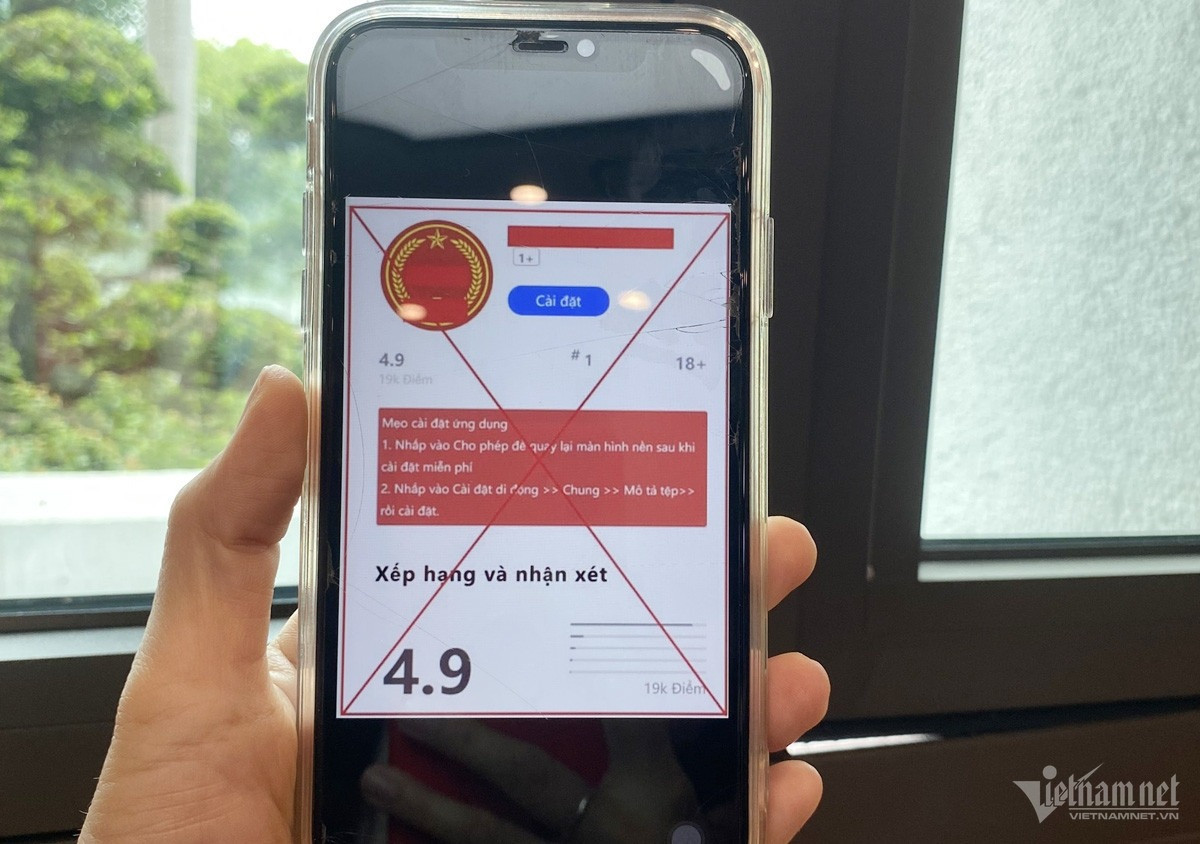
Fake government agency scams trick users into installing malicious Android apps. Illustration: N.H
According to Viettel Cyber Security (VCS)'s newly released report on cybersecurity threats in Vietnam in 2024, the organization detected over 4,100 phishing domains targeting users and customers of major Vietnamese organizations last year, a 30% decrease compared to 2023.
However, the Viettel Threat Intelligence system also identified 1,158 fake websites misusing the names of Vietnamese businesses and organizations - almost triple the number recorded in the previous year.
“This raises urgent concerns about brand protection for organizations and enterprises in Vietnam. Businesses and institutions need to focus on building and maintaining brand reputation while implementing effective measures to prevent damage to their credibility and brand value,” VCS experts warned.
Most notably, cybercriminals have shifted their strategy from targeting financial service customers to scamming public service users by impersonating government agencies.
Viettel Threat Intelligence also reported that, in addition to credit card fraud and scams involving fake refund assistance, impersonating government agencies to trick users into downloading malicious Android applications has become a popular method for cybercriminals.
By industry, the financial and banking sector remains the top target for phishing and fraud attacks, accounting for 71% of cases. Government impersonation scams make up 13%, while retail and e-commerce fraud represents 10% of attacks.
Online scams are evolving rapidly
Security experts predict that phishing and impersonation attacks will continue to rise, becoming more sophisticated with AI-driven tactics, including fake voice and video scams.
Speaking with VietNamNet, Vu Ngoc Son, Technical Director of NCS and Head of Technology at the National Cybersecurity Association, stated that online scams caused an estimated $756 million (18.9 trillion VND) in damages in 2024. This figure is expected to drive cybercriminals to launch even more attacks in 2025.
Son warned that scammers are continuously adapting their techniques, combining both highly sophisticated and deceptively simple fraud schemes that still manage to trick many victims.
The increasing availability of AI and Deepfake technology makes cyber threats even harder to detect, as criminals can now create convincing fake videos and voice recordings to execute large-scale social engineering scams.
“New technology provides criminals with more tools to commit fraud, but the real danger lies in their ability to exploit human psychology, lack of awareness, and greed. As long as users do not enhance their knowledge and critical thinking skills regarding unrealistic online offers, online scams will persist,” Son explained.
To protect against online fraud, experts recommend that users:
Avoid clicking on unknown links, especially in unsolicited emails or messages.
Verify the source of any application before downloading and only install apps from official stores like the App Store, Google Play, or official websites.
Be cautious of unusual requests and never share personal or financial information with unverified contacts.
Avoid using public Wi-Fi for sensitive transactions such as banking and account logins.
Stay informed about the latest scam techniques through trusted cybersecurity alerts.
Van Anh